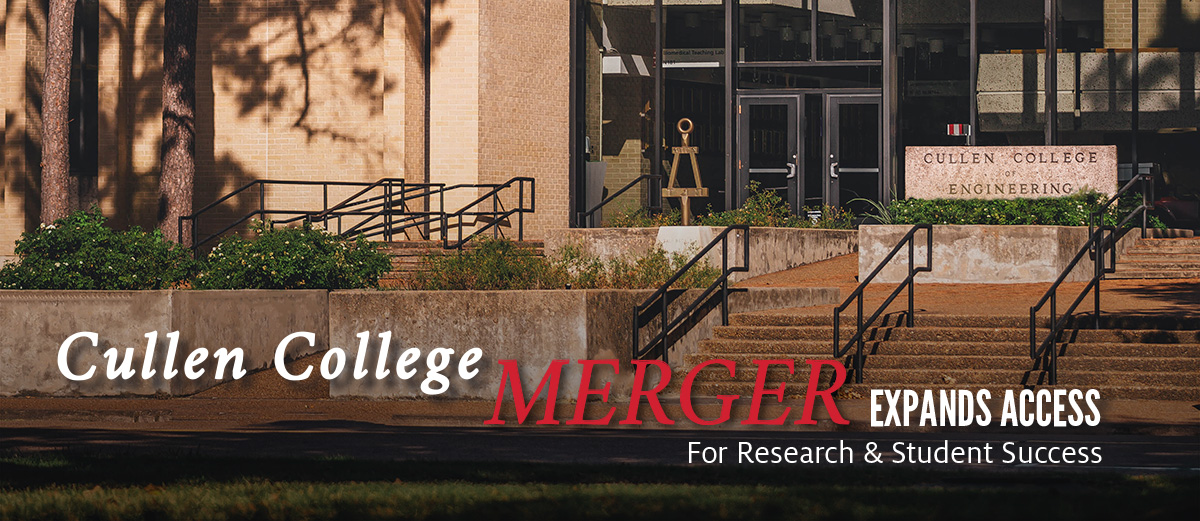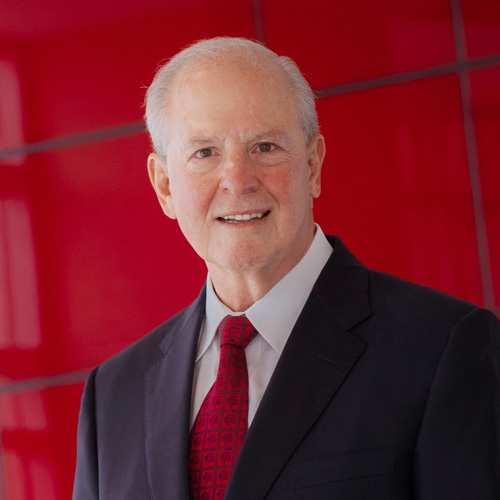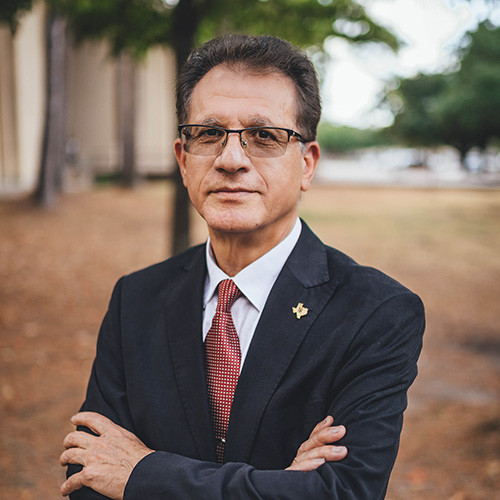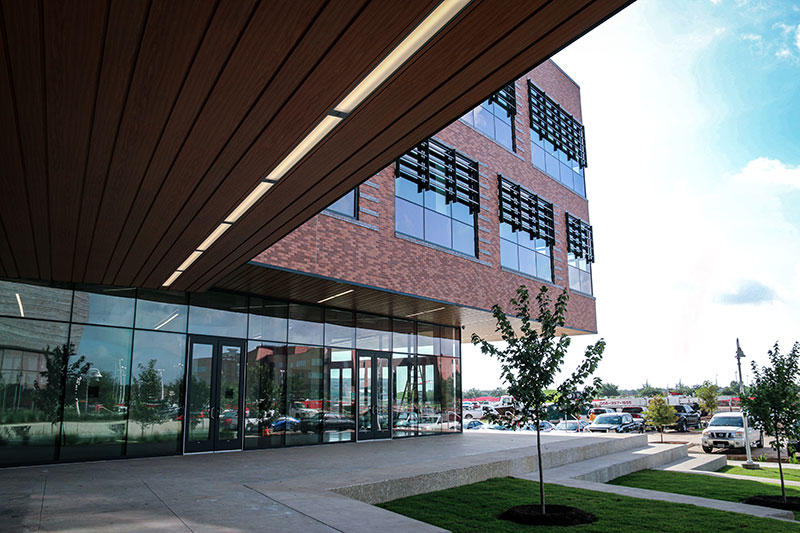
By Stephen Greenwell
The merger of the Cullen College of Engineering and the College of Technology is perhaps the most transformative event in the college's more than 80-year history. The leadership of the new, combined college talk about how this merger will improve student success and outcomes, by offering more robust and varied degree options. We also take a look at the excellent work that Technology Division professors and students have been producing, which are in line with the excellence already being done at the Cullen College of Engineering.

Joseph W. Tedesco

Heidar A. Malki
Calling it the “greatest and most significant transformation in its 80-year history,” Joseph W. Tedesco — the Elizabeth D. Rockwell Dean of the Cullen College of Engineering — sees the merging of the Cullen College of Engineering and the College of Technology as an exciting opportunity that will allow for more collaborative research opportunities, and new opportunities for students and faculty at both colleges.
“This makes us the third largest engineering college in the state of Texas, and the second largest College at the University of Houston,” Tedesco said. “The university's strategic plan and the ultimate goal is to become a Top 50 public institution. We will never achieve that unless we have a high performing engineering program.”
Heidar Malki, the senior associate dean of the Technology Division, also spotlighted the ability of the merger to improve student success and research for both colleges.
“The combined college will have very strong programs with multidisciplinary research, as well as applied programs that are in line with the university's vision when it comes to energy, medical, manufacturing and cybersecurity,” he said. “The faculty among these two colleges can put their efforts to increase grant activities, as well as recruiting the best faculty and top-rated students across the nation.”

While Tedesco noted that the six-year graduation rate is already high, at 75 percent, the merger will enhance student outcomes by providing more degree programs for students, as well as leveraging Cullen initiatives like the First Year Experience and PROMES to improve outcomes.
“We plan on using our strategies that helped bolster the student's successful six-year graduation rate for the College of Engineering, and we can now apply those to the technology division,” he said.
Malki also saw the ability for students to have access to these programs as an important reason for the merger.
“Right from the start, students will take the appropriate courses, and hence increase their graduation rate by not taking unnecessary courses,” he said. “We want to mentor them right from the beginning. Based on performance, they can choose a wide variety of options as they finish the first year and then move on to the program of their choice.”
Tedesco described how the merger would provide students with more flexibility to pursue the topics that interested them.
“I think that we're able now to accept many more students into the college that typically were not admitted into engineering. With our expanded curriculum, we really open up a menu of courses that were never available before. Students have the opportunity of coming into engineering, and they may find that they're more inclined towards technology, and they can seamlessly transfer. And the same holds true for students that we bring into the technology program. If they can meet the metrics for engineering, we will seamlessly let them in as well. I think it's a win-win for the students.”
The new student pool has the potential to help faculty members, as well as enhance the offerings of the Technology Division.
I THINK THE FUTURE OF THE CULLEN COLLEGE OF ENGINEERING IS SO BRIGHT, I GOTTA WEAR SHADES.Dean Joseph W. Tedesco
“The faculty will have access to a greater variety of students, a very diverse pool,” Tedesco said. “We're able to create new research initiatives that were not possible in the standalone College of Engineering, due to the different backgrounds that are brought to us by the technology faculty. Also in the past, technology did not have a Ph.D. program. Their faculty were unable to mentor those types of students. Now they will have the opportunity to meet the Ph.D. students within the College of Engineering.”
The merger is part of a larger expansion of both colleges. Engineering courses are taught at the Katy campus, and the Technology Division will have new facilities in Sugar Land for all technology students and programs by Fall 2025. The college also has partnerships with the systems of Houston Community College, Lone Star and San Jacinto. Tedesco called it an “engineering network.”
“We can offer both technology courses and engineering courses at all three of those locations, either synchronously or asynchronously,” he said. “I think we're doing a much better job now and really catering to the needs of the Houston community by providing them high quality engineering and technology education.”

Malki added that the move of the technology programs from the main campus to Sugar Land aligns with the goals of UH President Renu Khator, who led the acquisition of 300 acres for that campus. The design of a second building for the Sugar Land campus is complete, with construction projected to finish by Summer 2025. Starting in Fall 2025, all undergraduate and graduate technology programs will be at Sugar Land.
“President Khator's vision is to extend the university offerings beyond the main campus, both at Sugar Land as well as the Katy campus, where the industry and commercial bases are expanding at a rapid basis,” he said. “The combined college will be better positioned to serve these communities.”
When Tedesco looks at the future of the combined college, he can't help but think of a famous line.
“I think the future of the Cullen College of Engineering is so bright, I gotta wear shades,” he said, laughing. “We will have a curriculum that would rival any curriculum of any engineering college in the country. We have great support from the local community, great support from the alumni and great support from the university administration. Our academic programs will excel, our research enterprise will grow to tremendous heights, and we are going to bring this university to the Top 50."